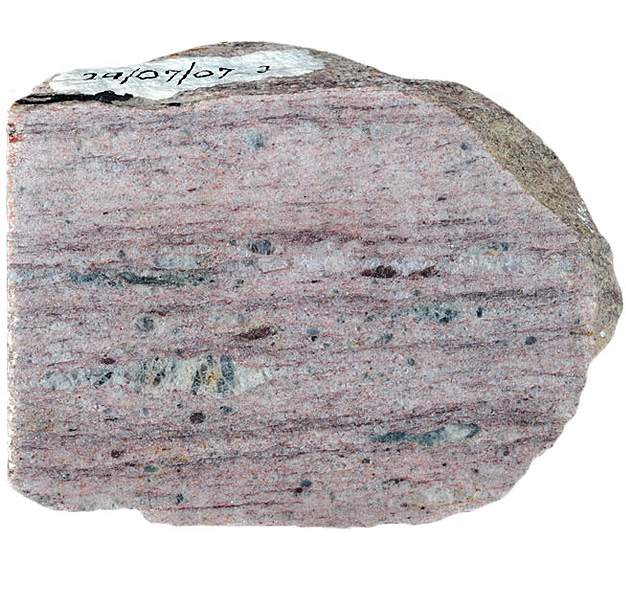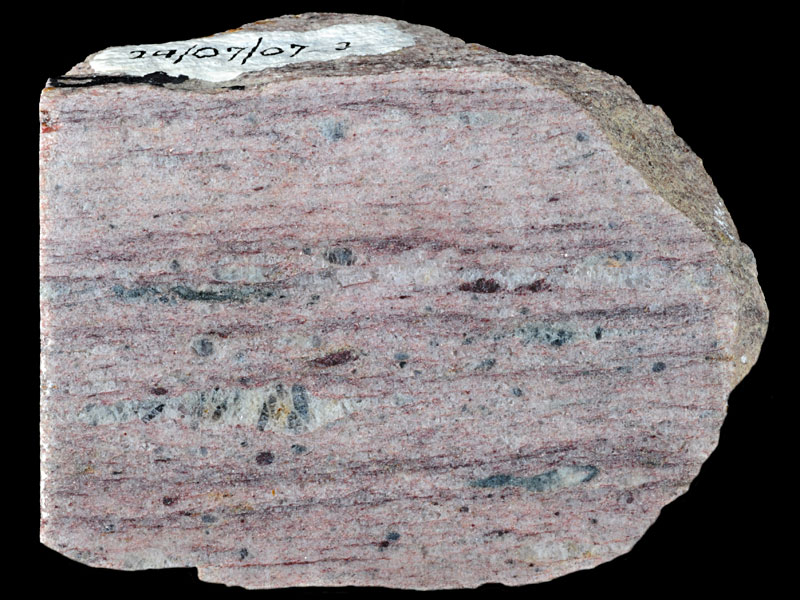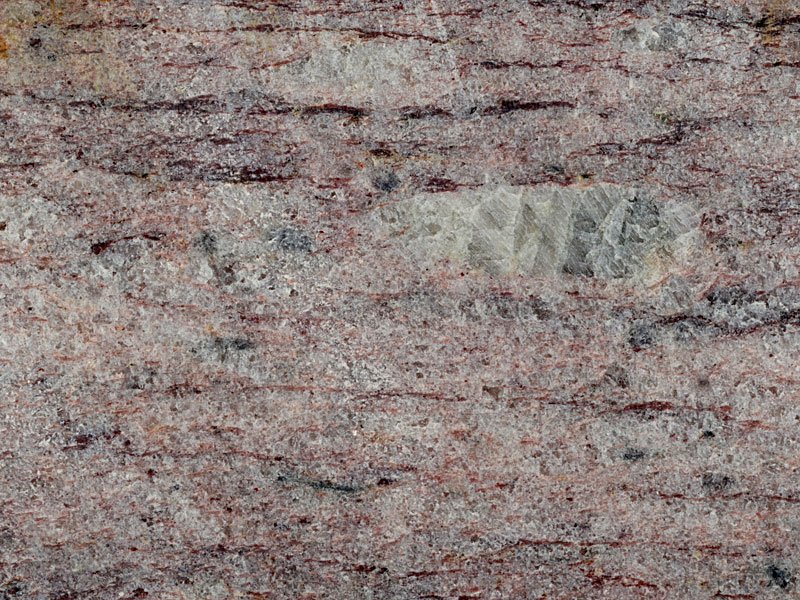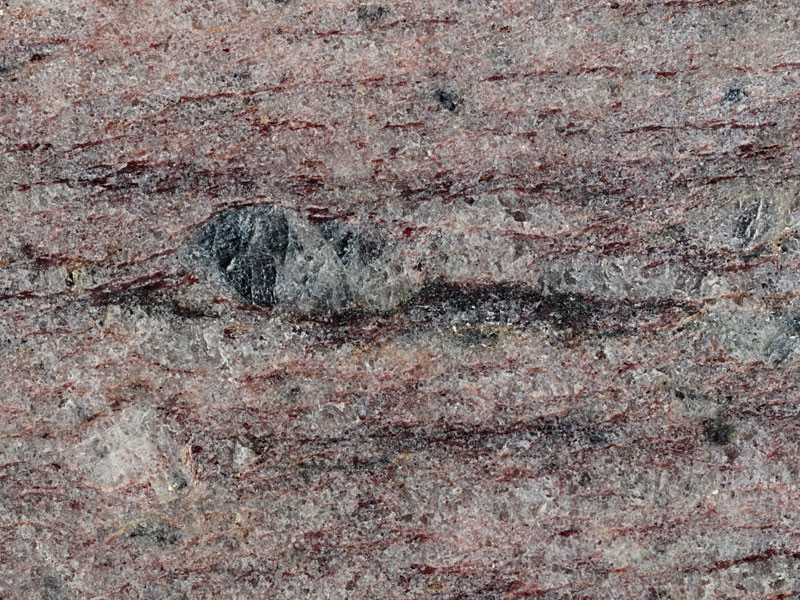
Fact sheet
This sample was found to the NE of Ben Hope in the far north west of Scotland. It comes from the "famous" diamond locality described by John Faithfull in the Scottish Journal of Geology (2007, volume 43, pages 33-40). It is a pink mica-rich quartzite, with small quantities of tiny dark-red, black and colourless crystals. It was the colourless garnets that led Matthew Forster Heddle (in the late 1890's) to suggest diamonds may be present in the rock. The recent investigation has confirmed that the "diamonds" are instead garnets. The sample is from an erratic boulder, but is almost certainly derived from local Moine rocks.
The sample contains an oxidized manganese-rich silicate and oxide assemblage: piemontite, muscovite, spessartine (Mn-rich garnet), K-feldspar, hematite, braunite, and rare zircon. Rotations 1 and 3 focus on the piemontite which is remarkably pleochroic, whereas rotation 2 shows the Mn-rich muscovite, more piemontite, iron/manganese oxides and tiny colourless garnets. Look closely as the garnets are difficult to see.
The United Kingdom Virtual Microscope (UKVM) collection consists of igneous, sedimentary and metamorphic rocks from around the UK.
It is intended as a teaching resource, helping to tell the story of the common rock types and how they form, and reflecting the history of the UK at the margins of the continent of Europe. The collection is a series of teaching sets, for example igneous rocks from the North Atlantic Igneous Province and SW England; high-temperature metamorphic rocks from Scotland and low-temperature metamorphic rocks from Wales; and sedimentary rocks, including English limestones and sandstones.








